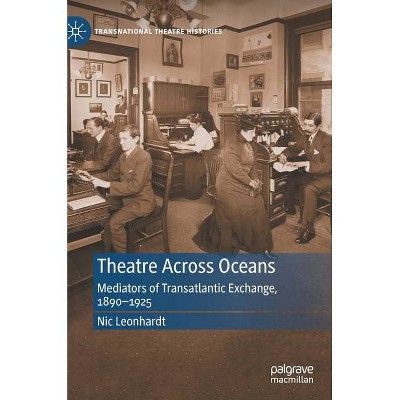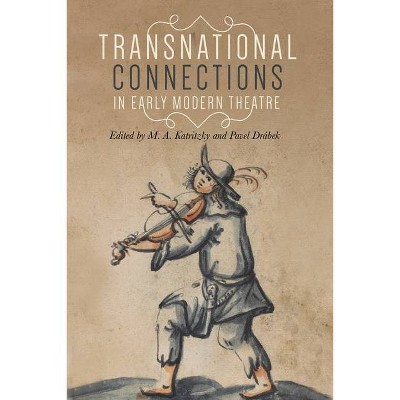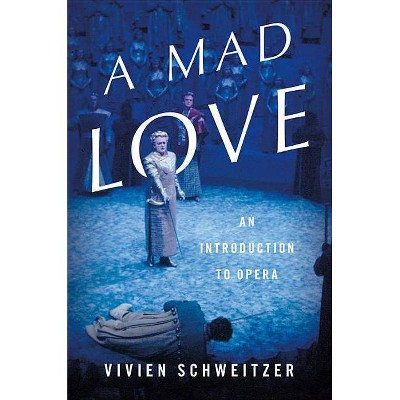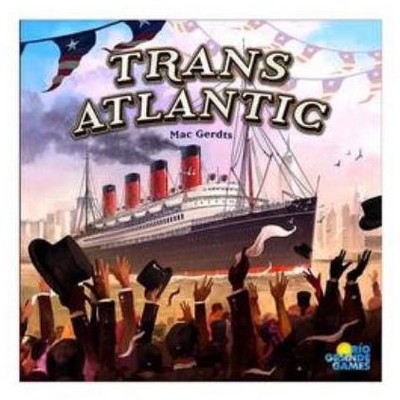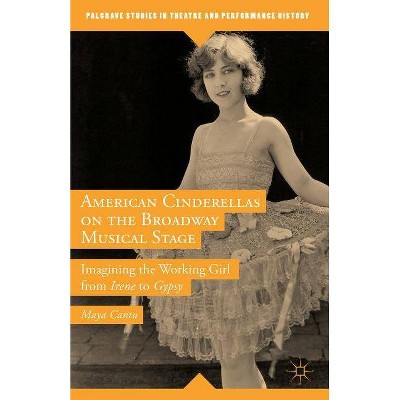Transatlantic Broadway - (Transnational Theatre Histories) by M Schweitzer (Hardcover)
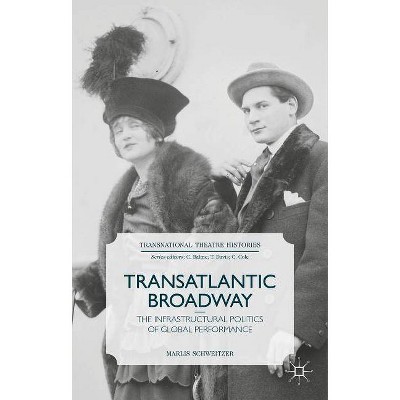
Similar Products
Products of same category from the store
AllProduct info
<p/><br></br><p><b> About the Book </b></p></br></br>"Transatlantic Broadway traces the infrastructural networks and technological advances that supported the globalization of popular entertainment in the pre-World War I period, with a specific focus on the production and performance of Broadway as physical space, dream factory, and glorious machine. Inspired by post-humanist scholarship, this book pays heed to the non-human entities and the backgrounded or disappeared human laborers who participated in the transnational expansion of theatre networks. In particular, it examines the transnational performances of ocean liners, piers, telegraph cables, telegrams, typewriters, office spaces, newspapers, and postcards and asks how these objects, as participants in a series of complicated networks, transformed the machinery of US theatre as well as the everyday practices of those who produced and consumed it. In so doing, it identifies surprising connections between the most mundane of actions - typing a letter, turning over a postcard - and the most extraordinary - firing a torpedo, declaring war"--<p/><br></br><p><b> Book Synopsis </b></p></br></br>Transatlantic Broadway traces the infrastructural networks and technological advances that supported the globalization of popular entertainment in the pre-World War I period, with a specific focus on the production and performance of Broadway as physical space, dream factory, and glorious machine.<p/><br></br><p><b> Review Quotes </b></p></br></br><br><p>"Transatlantic Broadway makes an important contribution to theatre and performance studies, American cultural history, histories of capitalism, and studies of print and material culture. ... Essential for scholars and teachers of theatre history, Schweitzer's study prompts readers to envision historiography as competing and overlapping threads or networks. ... Transatlantic Broadway attends to performers, spaces, and archives that have been neglected in previous studies of the theatre, thus encouraging scholars to rethink the literal and disciplinary borders of US theatre history." (Nicole Berkin, Theatre Survey, Vol. 58 (1), January, 2017)</p><p>"This finely wrought book significantly expands the fields of US theatre history and performance studies by mapping a new historiographical framework for understanding Broadway's formation. ... Schweitzer's combined application of ANT and 'scriptive thing' theory to transatlantic Broadway offers an inspiring historiographical model for performance scholars." (Kim Marra, Theatre Journal, Vol. 68 (4), December, 2016) </p><p>"Transatlantic Broadway examines a wide range of theatrical media, tracing their circuits through Europe and the United States and considering the ways that they establish communities. ... Though the book will be most immediately valuable to scholars of performance and mobility, it will also be useful to mobility studies scholars interested in media, business, and urban geography." (Sunny Stalter-Pace, Transfers Review, Vol. 5 (3), Winter, 2015)</p><p><br></p><br><p/><br></br><p><b> About the Author </b></p></br></br><p>Marlis Schweitzer is an Associate Professor in the Department of Theatre at York University, Canada. Her publications include When Broadway Was the Runway: Theater, Fashion, and American Culture and Performing Objects and Theatrical Things (co-edited with Joanne Zerdy, 2014). Her articles have appeared in Theatre Journal, Theatre Survey, Theatre Research International, and TDR. She is the editor of Theatre Research in Canada/Recherches théâtrales au Canada.</p><p><br></p><p><br></p>
Price History
Price Archive shows prices from various stores, lets you see history and find the cheapest. There is no actual sale on the website. For all support, inquiry and suggestion messagescommunication@pricearchive.us
